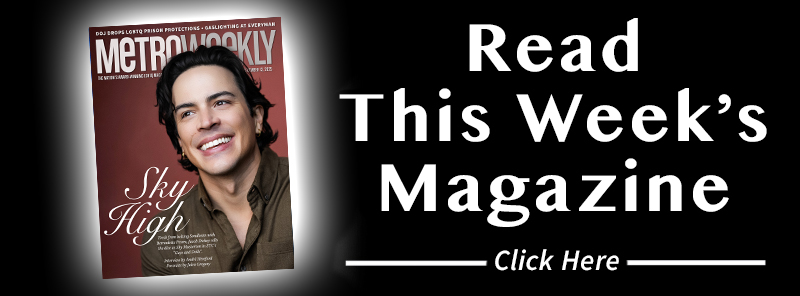Shooting Gallery
'Bowling for Columbine'
 Taking aim: Moore |
A tourniquet wouldn’t stop the rush of bleeding heart liberalism that accompanies the films of Michael Moore. Not to oversimplify things, but Moore pretty much blames the greed of “White Corporate America” for this country’s social ills. And while he may have a point or two, anyone expecting in-depth analysis from the documentary filmmaker has raised their expectations too high. Moore hosts his films in the manner of a garden pest; he’s every bit as much an entertainer as he is a rabble-rouser.
In Bowling for Columbine, Moore uses as his muckraking launching pad 1999’s Columbine High School shootings and finds ways to couch the sobering horrors in irony and absurdist humor. It’s the old Mary Poppins adage hard at work: “A spoonful of sugar helps the medicine go down.”
Bowling for Columbine is Moore’s most notable achievement since his 1989 debut, Roger & Me, in which Moore obsessively dogged General Motors CEO Roger Smith, in an effort to get him to discuss the GM plant closings in Moore’s hometown of Flint, Michigan. Bowling for Columbine is a slicker, more sophisticated piece of filmmaking, and it is far more ambitious in its emotional arc. Those who enjoy Moore’s knack for letting people ridicule themselves on camera or who enjoy his badgering of celebrities and CEOs will not be let down.
But Columbine also reveals a surprising side of Moore — one who allows genuine poignancy to seep through the politics. There are several moments during the film in which the audiences is stilled, the most harrowing being Moore’s masterful assemblage of security camera footage from the day of the Columbine massacre. It’s a grim, chilling sequence, as potent and heartbreaking as anything ever included in a mass-market documentary.
Though a lifelong member of the National Rifle Association, Moore is not a proponent for the pro-gun lobby. His mission is to discover why America has over 11,000 gun-related murders per year, while, for instance, neighboring Canada — “a nation of hunters” with over 7 million registered guns — squeaks in at less than 175 gun-related murders per year. Using fact, fiction (an uproarious, satire-drenched animated short detailing the “White Man’s” fear of blacks), and his own special brand of irony, Moore furthers his ideas that America is a country kept in a state of constant panic and fear by the media and government. Fear, after all, turns a profit.
Societal violence is a tricky subject to tackle — it’s large, beefy, unwieldy. Still Moore does his best to cover as much ground as possible — the movie is thorough in its mission. Moore uses information to suit his purpose, such as blaming the government’s Welfare-to-Work program as a direct link to the shooting of a six-year-old by another six-year-old at Buell Elementary School in Michigan. The accusation — presented in a connect-the-dots fashion — seems both far-fetched and more than a little plausible.
Moore is at his best when playing foghorn, eschewing subtlety for grandstanding, such as entering K-Mart headquarters with two Columbine survivors, both of whom still have bullets lodged in their bodies (the bullets used were purchased at K-Mart). They’re there, as Moore points out to a perky yet slightly irritated P.R. associate, to “return the merchandise.” Moore seems genuinely surprised when the K-Mart brass takes his bait and pledges to phase out the sale of ammunition from its stores. It’s a triumph for Moore and the two boys, as well as for us all. Still, the victory is clearly not what Moore expected; it short circuits the cheap confrontational tactics his persona is built on.
In Roger & Me, Moore never got the opportunity to speak with CEO Roger Smith. In Columbine, he gets the opportunity to sit down with Charlton Heston, Grand Poobah of the NRA and a once-great movie star who has proven himself, in the past few decades, to be among the most heinous pro-gun mouthpieces alive. There is no moment in Bowling for Columbine more monumental than the one in which Moore asks Heston if he’d like to apologize for helming NRA rallies in Littleton, Colorado, and in Flint, Michigan just days after the youth shootings. Heston’s remorseless (and no doubt Alzheimer’s-influenced) response is enough to make you forget that the actor once embodied Moses. If anything, Heston has become the anti-Moses, his two tablets replaced by the Second Amendment and a round of cop-killers.
When you get right down to it, Moore doesn’t offer anything that we don’t already know about the danger of guns, the undercurrent of racism that persists within (and undermines) American society, and the profit-motives of a media that grips its audiences in a vice of fear every evening at 4, 5, 6 and 11, and on some stations, around the clock. Still, when Moore aims for a target, he generally hits a bullseye. And Bowling for Columbine is Moore’s finest marksmanship yet.
Support Metro Weekly’s Journalism
These are challenging times for news organizations. And yet it’s crucial we stay active and provide vital resources and information to both our local readers and the world. So won’t you please take a moment and consider supporting Metro Weekly with a membership? For as little as $5 a month, you can help ensure Metro Weekly magazine and MetroWeekly.com remain free, viable resources as we provide the best, most diverse, culturally-resonant LGBTQ coverage in both the D.C. region and around the world. Memberships come with exclusive perks and discounts, your own personal digital delivery of each week’s magazine (and an archive), access to our Member's Lounge when it launches this fall, and exclusive members-only items like Metro Weekly Membership Mugs and Tote Bags! Check out all our membership levels here and please join us today!

























